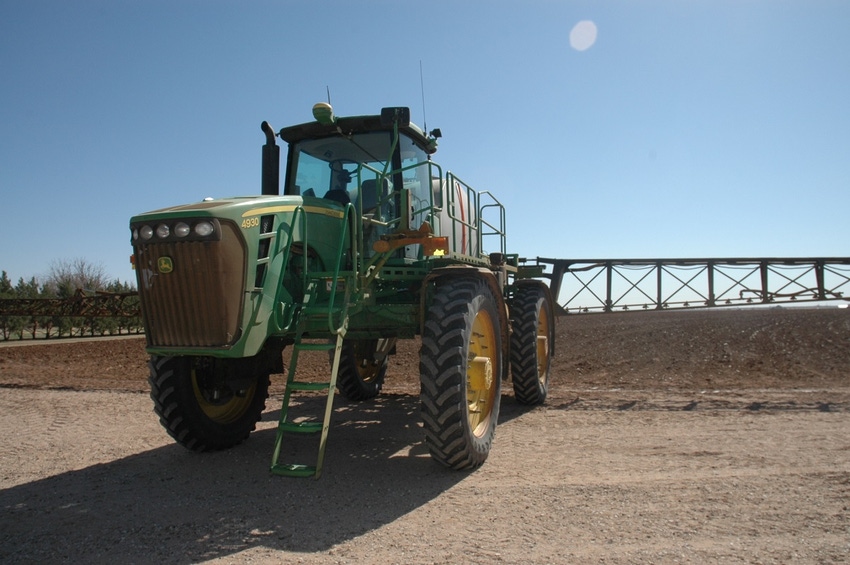May 17, 2016

The first, and possibly most important, step in preserving valuable herbicide technology is reading and following the label. The label is the law.
Expedience, however, may sometimes tempt farmers or applicators to take shortcuts or cut corners to treat a field in a timely manner or to reduce expenses when commodity prices are low. Probably not a good idea, according to an article from a recent Texas Row Crops Newsletter, authored by Texas AgriLife Extension specialists Gaylon Morgan, Paul Baumann, and Josh McGinty.
“Large farms and erratic weather make it difficult for producers to cover all their acres for nutrient and pest management,” the authors report. “So everyone is looking for ways to cut trips across the fields to save money and time. However, if we are not careful, we could be doing more harm than good and costing ourselves money in the short- and/or long-term.”
“It all starts with the herbicide label,” the report reads. Here’s what a producer should pay attention to on a herbicide (or other pesticide) label.
Tank mix compatibility. “When tank mixing herbicides or herbicides with other products (fertilizer, insecticides, and fungicides) always read and follow the label for allowed tank mixtures and mixing order. Tank mixtures can enhance activity (synergism), have no impact (neutral), or can decrease activity (antagonism). Antagonism can be due to chemical interactions in the spray tank, incompatibility in the tank due to poor mixing capabilities, or inhibition of herbicide once it is sprayed on the weeds. Approved tank mix partners are clearly stated on the label and often include specific rates, if different than either of the individual herbicide labels. Liberty 280 (glufosinate) herbicide does not list Roundup (glyphosate) as a tank mix partner in cotton, because of some slight antagonism observed with this tank mixture. Tank mixtures of Staple (pyrithiobac) with grass-only herbicides (clethodim, fluazifop, quizalofop, or sethoxydim) are not recommended because of potential for reduced grass control.”
Be cautious of reduced rates. “As crop budgets get tighter, reducing herbicide rates—below label requirements—becomes more appealing and more common. However, repeated applications of below label rates of herbicides substantially increase the likelihood for developing herbicide resistant weeds. This point has not been commonly emphasized for herbicides, but reduced rates have proven to promote insecticide and fungicide resistance multiple times over the past decades. Use of the full label rate also applies to herbicide tank mixtures, unless the label states otherwise.”
Don’t get creative. “As producers struggle with glyphosate resistant weeds, some have turned to creative herbicide combinations—some with success and others not so much. (We) recently heard of some people applying reduced rates of Liberty at 8 to 10 ounces per acre, tank mixed with Roundup and claiming better control of weeds. We have not found any research data that suggests any better weed kill from spiking glyphosate with Liberty; however, if additional efficacy is being observed it is likely due to Liberty’s high surfactant load increasing glyphosate uptake. If the benefit of spiking glyphosate with Liberty is the surfactant, then most surfactants are available at a lower price. More importantly, spiking glyphosate with Liberty equates to application(s) of sub lethal doses of Liberty, which creates the perfect scenario for developing glufosinate tolerant weeds. Liberty herbicide is a critically important herbicide for controlling weeds in most of our current cotton varieties (LibertyLink and XtendFlex), and is one of the few postemergence options for effectively controlling glyphosate resistant weeds. It would be a huge loss of an effective herbicide and herbicide tolerant trait, if Liberty resistant weeds were to develop.
For the latest on southwest agriculture, please check out Southwest Farm Press Daily and receive the latest news right to your inbox.
Morgan, Baumann and McGinty recommend producers read Weed Management in Texas Cotton as a reference for identifying label herbicides and rates for cotton. They say that the information here targets herbicide applications, but the same thinking holds for fungicides and insecticides.
You May Also Like




